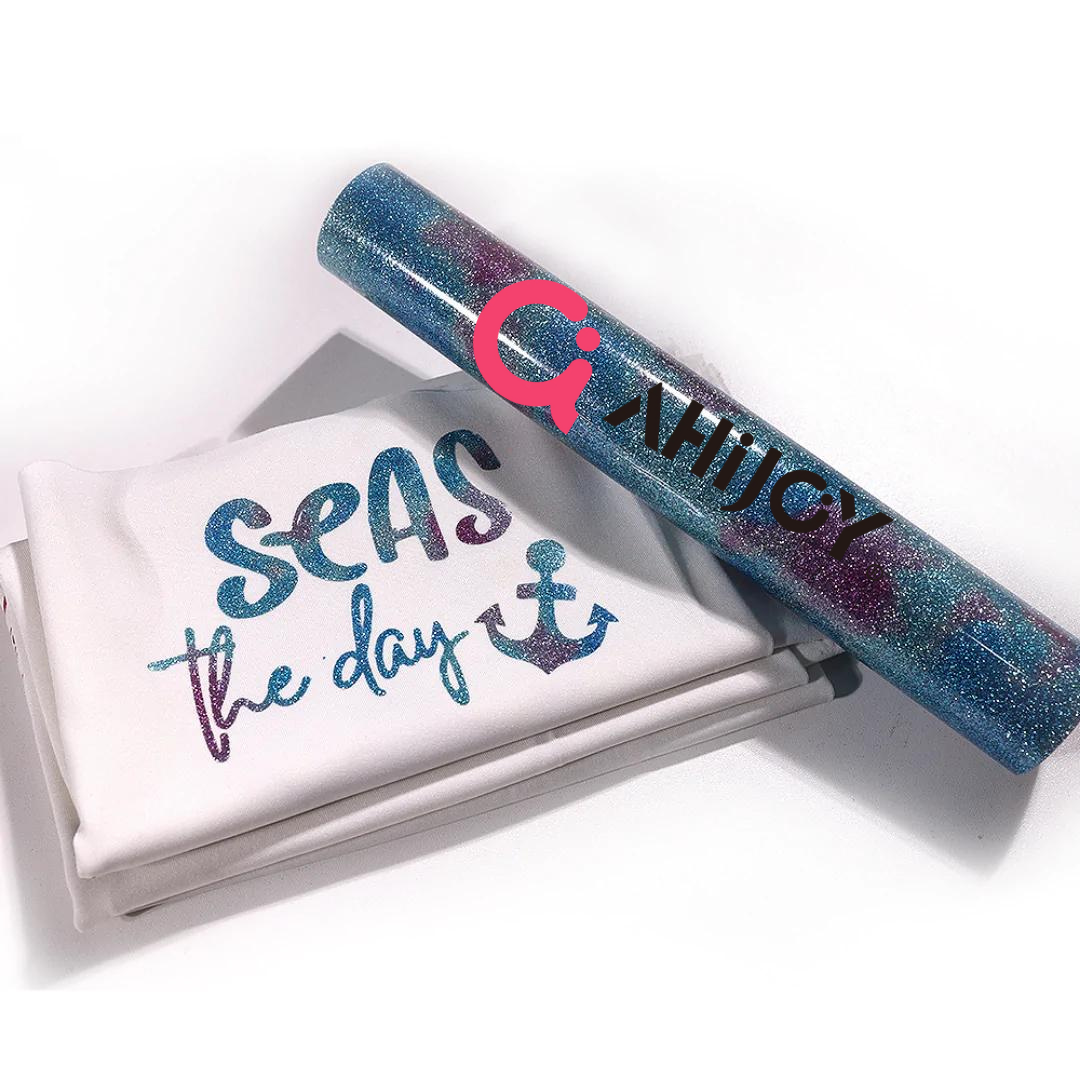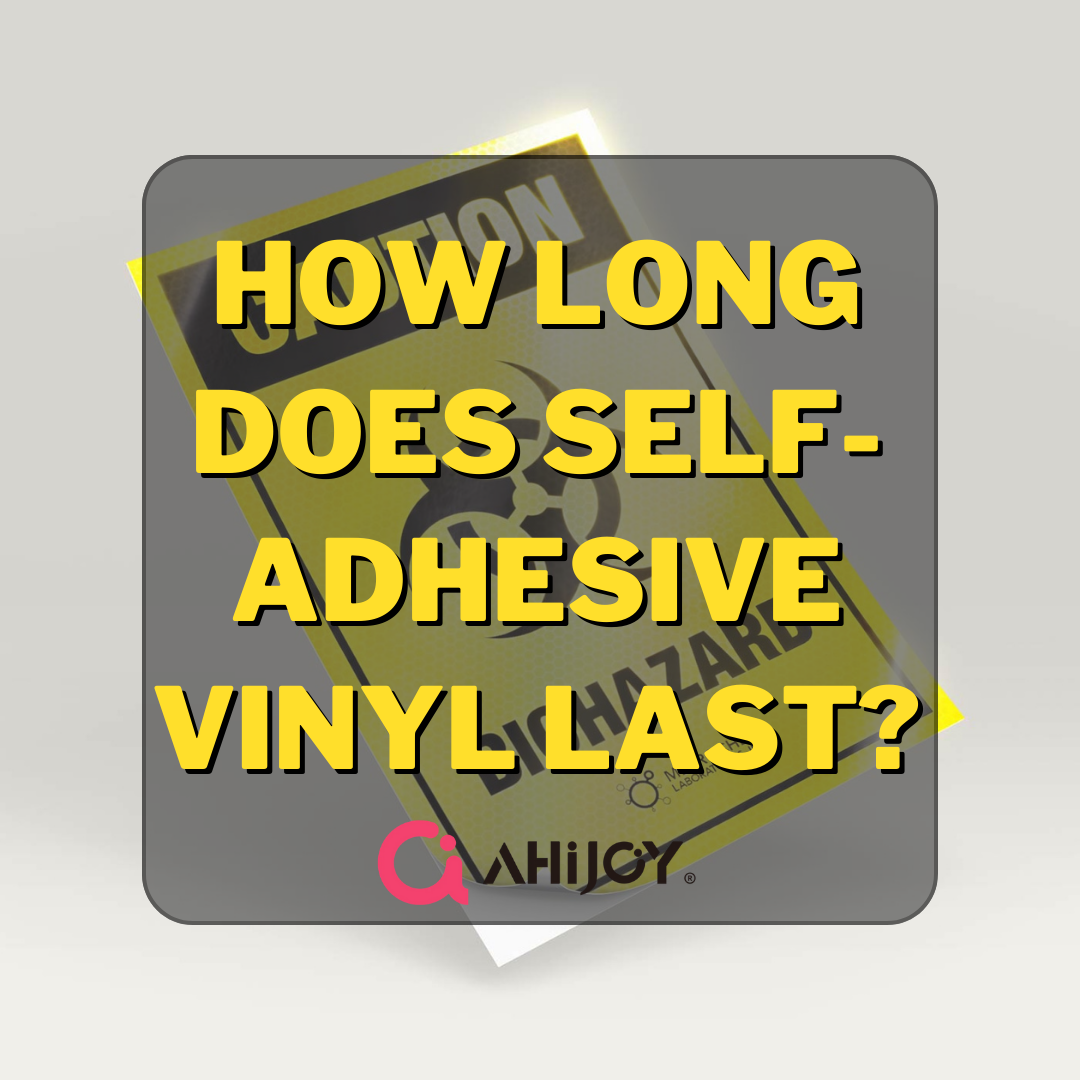posted by Ahijoy on October 3, 2022
How To Use Heat Transfer Vinyl
For those new to the crafting world of heat transfer vinyl, it is important to learn the tricks of the trade. Following is a step by step process of how you should use HTV to achieve perfection and create a truly amazing product!

Customized and branded shirts are all the rage these days. From high-end designers to small scale businesses, you will see heat transfer vinyl in almost everyone’s collections. But what is heat transfer vinyl?
Customized and branded shirts are all the rage these days. From high-end designers to small scale businesses, you will see heat transfer vinyl in almost everyone’s collections. But what is heat transfer vinyl?
HTV is a vinyl polymer with a heat activated adhesive backing and is primarily used on textiles. These textiles are mostly cotton, polyester, cotton/poly blends, and canvas. The specialty vinyl boasts a range of different colors and innovative textures including glow in the dark and puff glow vinyl.
Moreover, what is so admirable about this product is that you do not need to belong to some enterprise or need to be artistically inclined to use it. Whether you are a first time HTV user or an avid DIY-er you will find this vinyl easy to use.
Application Process
There are a few basic steps that apply to all kinds of HTV. Let’s take a look!
Step 1: Design Your Decal
Using appropriate software paired with your electronic cutter, design your vinyl and scale it according to your garment. Before you cut the vinyl make sure it is mirrored as this step is absolutely crucial to how your final product will look.
Step 3: Apply Heat
Next, put the design where you want it to be on the fabric. Make sure your garment and design is properly aligned then place a Teflon sheet or parchment paper on top of it. Apply a heat source which can be a heat press machine setting it at 305°F for 10-15 seconds with moderate pressure. These settings might differ slightly depending on what HTV and fabric you are using.
You can also use a dry home iron setting the temperature according to the fabric used, however, it does not often reach the temperature required to properly activate the adhesive. Make sure that the heat and pressure are applied evenly all over the design for the adhesive to firmly attach to the surface.

Step 4: Peel Off
After you have applied the heat, you will have to remove the carrier sheet and unveil your newly personalized apparel! Some vinyl may require you to wait for the sheet to cool down before peeling it off. If you are using an extra stretchy fabric, you will have to wait for the transfer paper to completely cool down before peeling it away. If you’re using polyester or other synthetic fabrics that are not stretchy, you can peel the transfer sheet while it’s still hot. Do make sure to check.
And It’s Done
Once the heat transfer vinyl has been properly applied, it is ready for wearing or flaunting in front of friends and family. If the fabric needs washing, wait and allow the adhesive to cure first. It takes at least 24 hours or more. Once it has healed, it can be washed and dried, but do not use harsh detergents or wring the fabric with force. Wash inside out with cold water and hang to dry.

Where To Use Heat Transfer Vinyl?
Heat Transfer Vinyl is great to use for customized clothing and accessories such as t-shirts, hats, shoes, bags, and so on. You can also make wall hangings, decorate your pillow covers or make other home décor items with it.
With so many choices in hues, patterns and textures the sky's the limit for what you can create. For small businesses, this is an excellent way to start putting out new designs too in an affordable way. Already established brands can use HTV for selling branded merchandise to expand their network.
No, this vinyl is not just for entrepreneurs; anyone looking to get crafty or personalize their wardrobe can use this product. You can make tote bags, hats, shirts, hoodies, and sweatshirts with your desired decals or inspirational phrases. There is room for all kinds of fashion trends to come alive.




